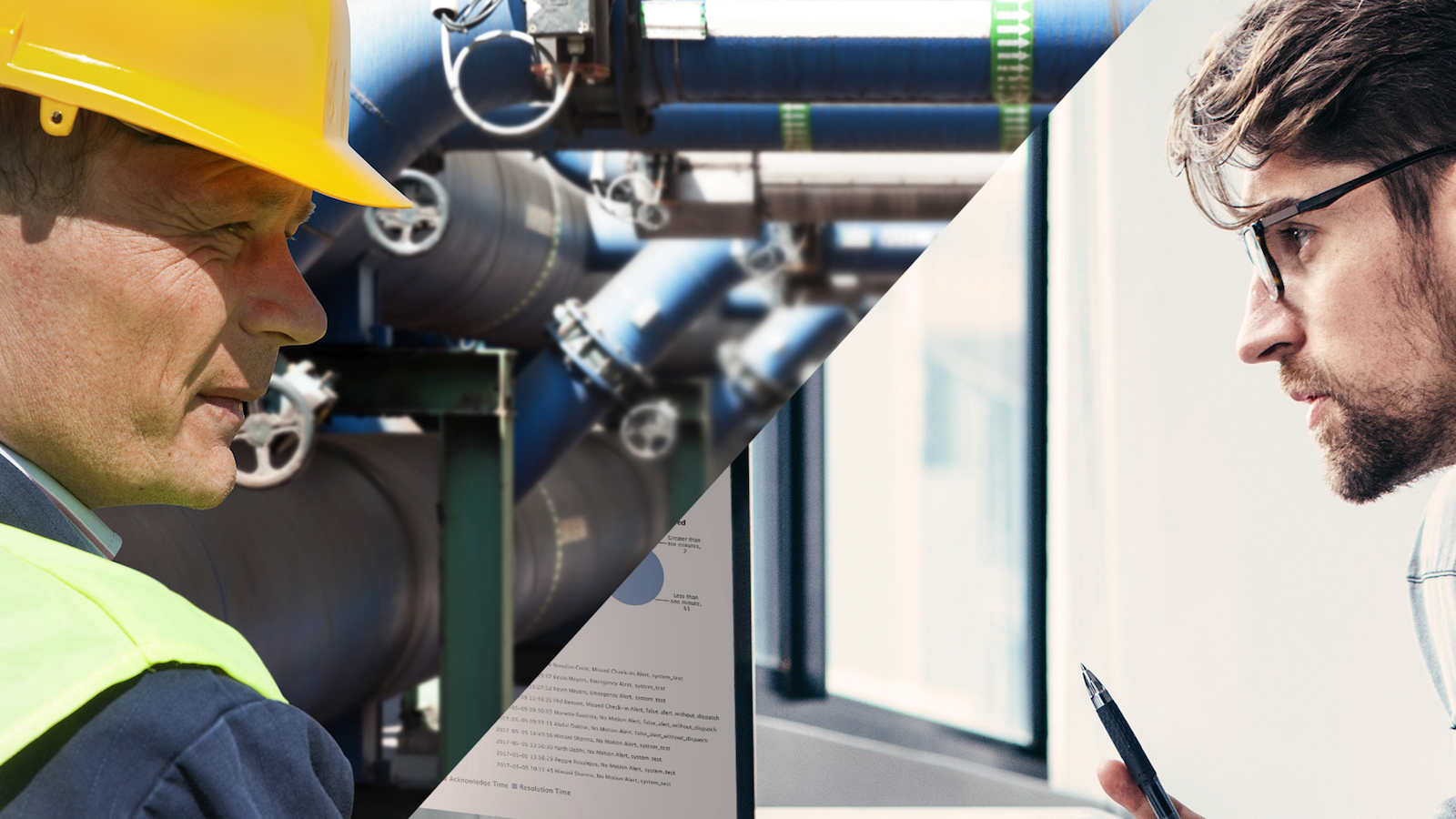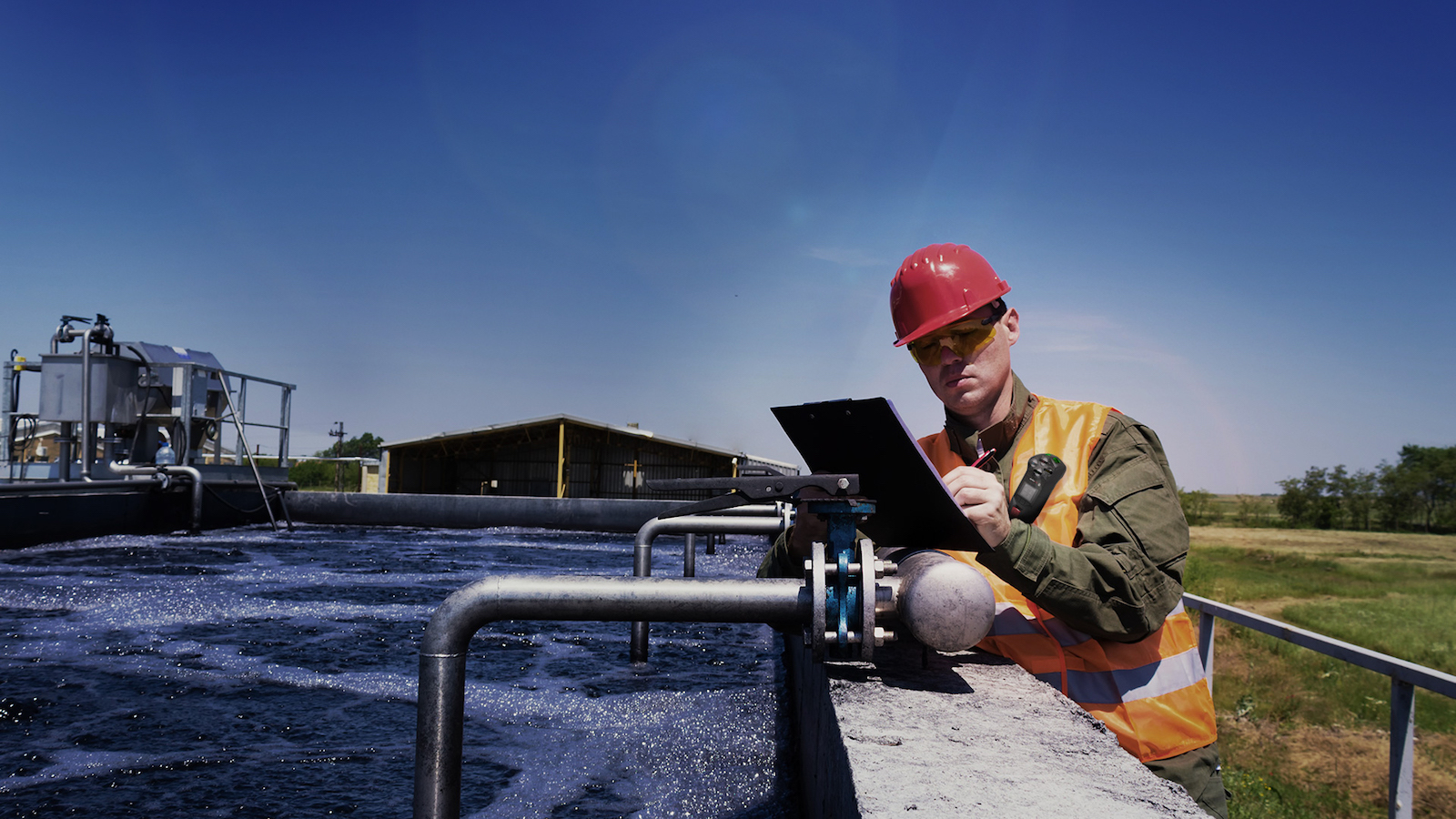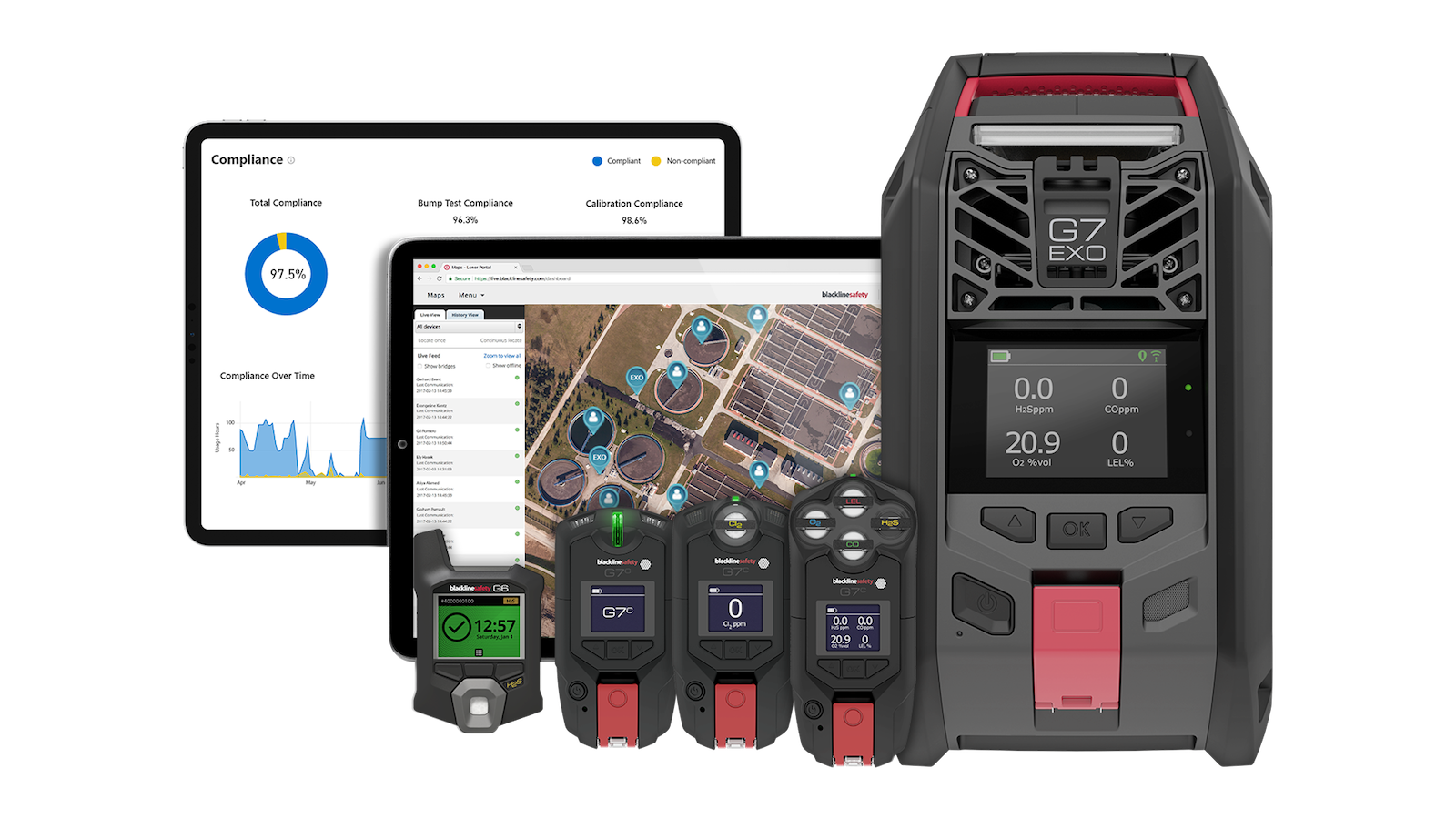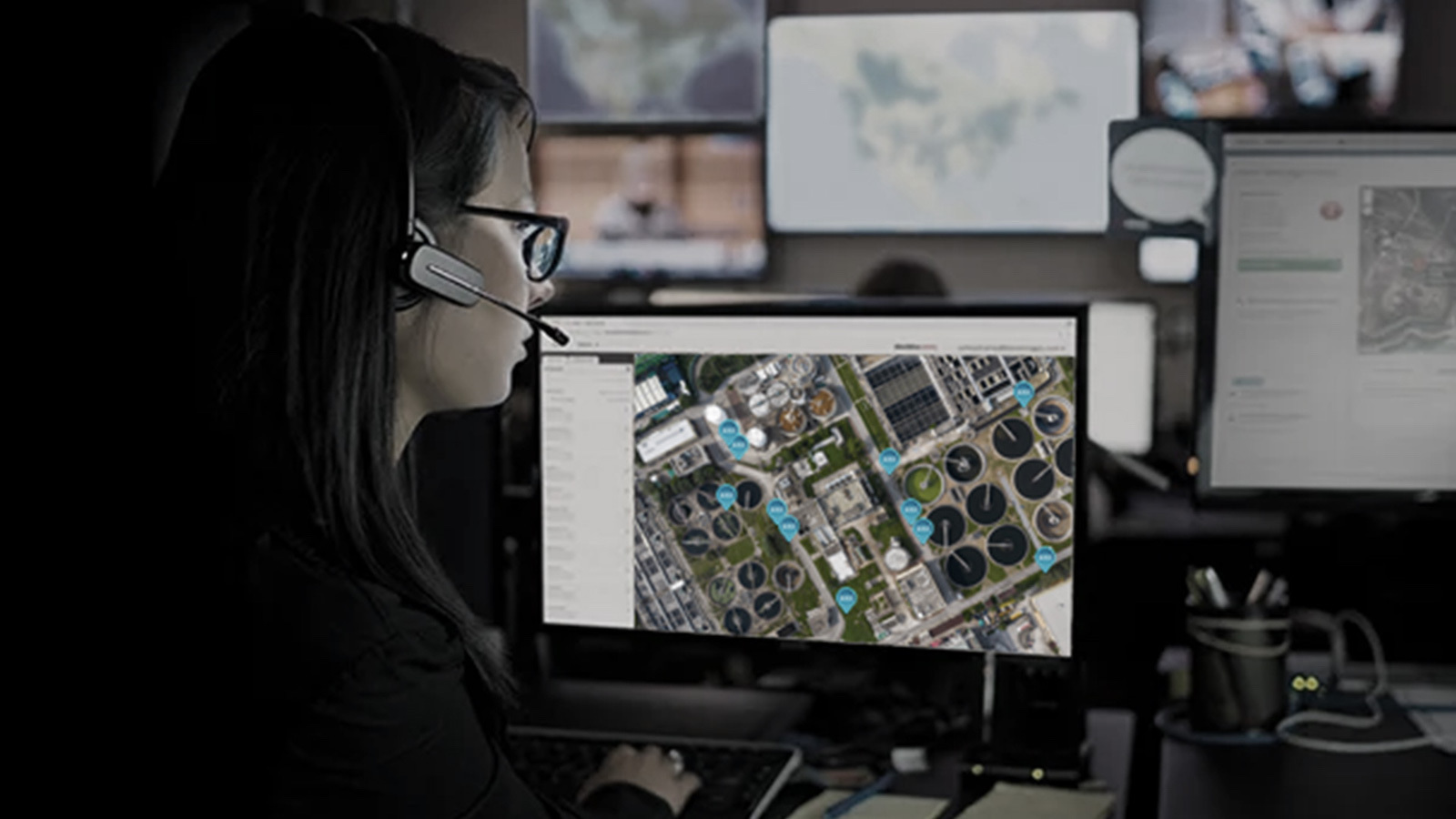Interested in Instrumentation?
Get Instrumentation articles, news and videos right in your inbox! Sign up now.
Instrumentation + Get AlertsMeeting the demand for clean drinking water and wastewater treatment is vital. Operations run 24/7 and downtime isn’t an option. It’s challenging work, but one thing your employees shouldn’t worry about is whether they’ll make it home after every shift. This means not only knowing when an incident happens and being able to quickly respond, but also having the ability to proactively prevent them. That takes connectivity.
Common health and safety risks
Essential workers in the water and wastewater industry face a variety of safety hazards every day, whether at facilities or traveling from site to site. On any given day, they may be supervising a wastewater treatment plant, monitoring flowmeters or checking water quality at remote pumping stations and reservoirs. When you combine all the potential risks — harmful gases, confined spaces and working alone — there’s a clear need for a versatile and scalable safety solution to protect your workers. Layer on the ability to analyze trends from captured data and you can move from reactive to proactive safety management.
GAS EXPOSURE AND EXPLOSION
Typical hazardous gases in water and wastewater applications are methane (CH4), hydrogen sulfide (H2S), chlorine (Cl2) and oxygen (O2) enrichment or depletion. Wastewater plants may also emit sulfur dioxide (SO2), ammonia (NH3), ozone (O3) and chlorine dioxide (ClO2). Associated risks are exacerbated by high temperature and humid conditions.
CONFINED-SPACE ENTRY
Working in confined spaces such as sewers and manholes, service reservoirs, storage tanks, treatment units or access tunnels is common. These environments create the risk of oxygen deficiency, exposure to flammable gases or elevated levels of hydrogen sulfide or exposure to elevated levels of hydrogen sulfide and other toxic gases. Due to consistently high levels of gas, individual beep-and-flash units are ineffective and often turned off.
LONE AND REMOTE WORKER
Workers out of sight and constant direct contact with co-workers, can face a slip, trip or fall, a health condition, or an extreme weather event that can turn deadly without a quick, easy way to call for help. Ready access to two-way, push-to-talk communications, the ability to pull an emergency SOS latch, and knowing exactly where the worker is located are key in these situations.
Harness connected safety solutions for real-time worker and full-site visibility
Current portable area gas monitors and personal wearables automatically connect to the cloud in minutes, without the need for Wi-Fi or networks to be set up. Whether it’s a lone worker incident or a facility emergency response or evacuation, connectivity will bring your safety program to the next level.
FULL-SITE AND WORKER VISIBILITY
A connected safety ecosystem needs a web-based safety and productivity software portal where you can configure, view and monitor all your devices in the field including their compliance status, from any internet connected smartphone, tablet or computer.
SITUATIONAL AWARENESS
With GPS-enabled location technology and direct-to-cloud data streaming, you can get real-time information and worker visibility at your fingertips — from normal routines to when an incident occurs. This means you immediately know what happened, when it occurred, who is involved and where they are located.
USE DATA TO WORK SMARTER AND SAFER
It’s never been easier to dive deep into data to uncover safety insights that help power your business decisions. Your safety ecosystem should include easy access to analytics reports that deliver visibility into how and where equipment is being used, where hazards are being encountered and to even identify which gas detection assets are compliant and performing well, and which can be used better.
LOCATION DETECTION
Connected technology allows you to see the location and safety status of all workers and surrounding atmospheres of area monitors in real time. In areas where buildings or equipment reduce GPS signals, location beacons are available that can be strategically placed around a facility and transmit location signals for proximity detection to improve the accuracy of the worker’s location.
STAY CONNECTED EVERYWHERE
Worker safety can only be assured if they are connected. For remote areas or work sites without a strong cellular connection, ensure they have devices that can also connect via satellite.
Communication and responsiveness – whenever and wherever
Devices with built-in layers of communication (manual, automated and time-based) which, when paired with live monitoring, are the critical lifeline to your workers for the help they need during an emergency, health event, dangerous situation, adverse weather conditions and more.
MANUAL ALERTS – EMERGENCY LATCH
In times of distress, workers need a way to instantly call for help through their safety device even if they can’t speak. For example, Blackline’s G7 personal gas detectors or lone worker devices have a patented SOS latch that can be pulled to generate instant visible and audible alarms to alert coworkers nearby and also notifies remote monitoring personnel.
(2021, Journal of Loss Prevention in the Processing Industry)An analysis of over 200 accidents at European wastewater treatment plants found that 13% were due to extreme weather. ”
TWO-WAY COMMUNICATIONS
Devices with two-way voice communication via text or optional push-to-talk offer another way for your workers to quickly reach out for help. This gives them the confidence that someone can respond to their need for assistance and lets you inform workers of impending weather events, work updates (e.g., change in muster point locations) or other vital information.
AUTOMATED ALERTS - FALL AND NO-MOTION DETECTION
An accelerometer can detect an unusual impact or any drastic changes in tilt to indicate a potential slip, trip or fall. It can also detect if a worker has stopped moving for some time and trigger an alert if, for example, the worker becomes pinned or losses consciousness which may not trigger a fall alert.
TIME-BASED ALERTS - MISSED CHECK-IN
Rather than relying on emails or phone calls, regular check-ins can be automated using a preconfigured countdown timer. With a push of a button, the worker can acknowledge that they are OK at preset intervals. If a check-in is missed and the worker fails to respond to a warning alert, the device can trigger a tailored emergency response workflow.
Comprehensive and flexible area and personal gas detection solutions
When considering a safety solution, look for personal wearable devices and portable area monitors that integrate seamlessly within a connected ecosystem to deliver an array of tools and services to help keep your teams safe and amplify your productivity.
CUSTOMIZABLE GAS DETECTION
Choose the right gas sensors to address the unique demands of your operating environments. If workers frequently move sites or the environmental hazards of your facility change, use devices where you can simply swap out the gas sensor cartridge for a different one. No more backup secondary devices required.
SIMPLIFIED FLEET MANAGEMENT
Location tracking and GPS help to drastically reduce the number of lost devices. If it’s turned on, the worker will find it.
LEADING GAS DETECTION TECHNOLOGY
The next generation of combustible gas sensors is here, providing unprecedented accuracy, reliability and safety for workers. NevadaNano’s Molecular Property Spectrometer sensor is accurate for a wide array of flammable gases, decreasing costly false alarms and unneeded evacuations.
Reliability and durability
The nature of work in the water and wastewater industry — dirty, wet and outdoors — means you need technology as durable and hard-working as your people are. Choose devices that are built for extremes and are thoroughly tested to ensure they withstand the toughest conditions. It’s about saving money, time and additional headaches you don’t need. But most important, it’s about saving your team from having to worry about their safety rather than the task at hand.
Area gas monitors with extended battery life
Select area monitors that can stand up to any environment and remain in the field for extended periods (G7 EXO has 100-day battery life). This will reduce the time required by workers to charge and replace devices. If the situation calls for extra power, add it via solar panels to continuously monitor the safety of your work site indefinitely.
Personal wearable - reduced maintenance
Calibration performed by third parties requires worker downtime. With fast and simple docking stations, there’s no need to bring in a third party to keep devices compliant. Compliance reports can put the ownership on the worker to perform bump tests and calibrations and the status of all devices can be confirmed by supervisors via online dashboards and reports.
High-performance, future-proof connected safety solution
Your connected safety hardware can transform safety and efficiency at your water and wastewater operation. With monitoring and data analytics software, your safety program can be more comprehensive, insightful and easier to manage.
Whether you need just one lone worker or personal gas detection device, a portable area gas monitor, or a facilitywide connected worker solution, choose devices that have the versatility to meet your needs today, or scale as needed — driving a low cost of ownership along the way.
Advanced data analytics
Data analytics capabilities can ensure you have real-time compliance, comprehensive safety monitoring and unquestionable control of evacuation management. Review historical data to help you identify and anticipate dangerous situations so you can take preventive measures to reduce future incidents.
24/7 monitoring services
No control room or monitoring personnel? No problem. There are services available where professional agents can expertly manage your emergency alerts in real time and gather critical insights into your workers’ safety.
With possible toxic gas exposures or explosive atmospheres, dangerous confined-space entries and the risks associated with working alone or remotely, there’s a lot to consider when evaluating the safety of workers in water and wastewater. Protecting workers with connected personal gas detectors and area monitors can ensure everyone is always accounted for. Data analytics provided by a connected solution further enable potential risks to be identified and incidents avoided, improving outcomes for workers and driving down the number of workplace injuries and fatalities year on year.
Interested in discovering all the ways new technology can save lives and transform the waster and wastewater industry?
Visit Blackline’s water and wastewater page










